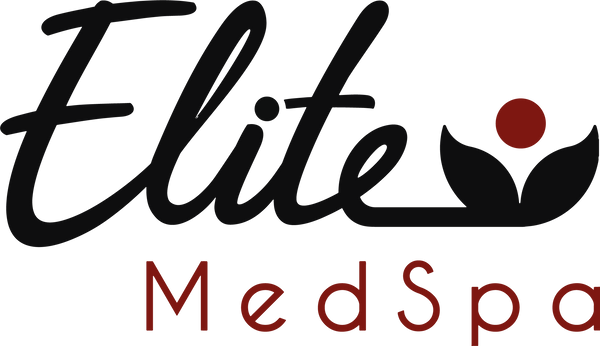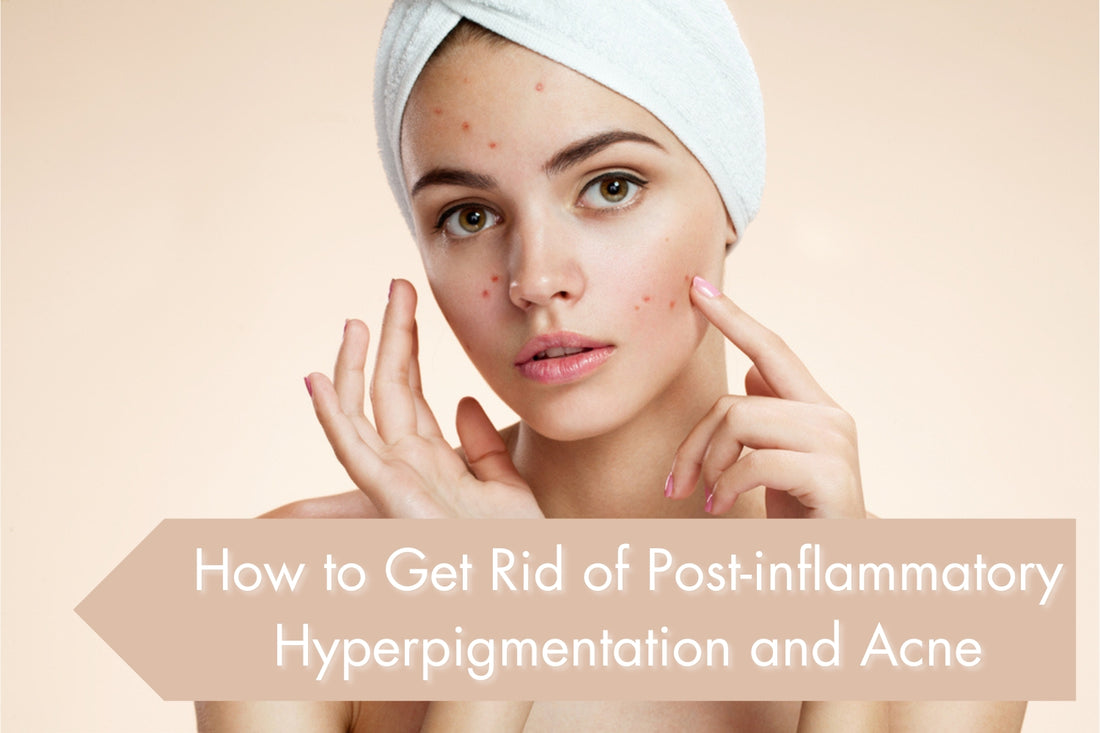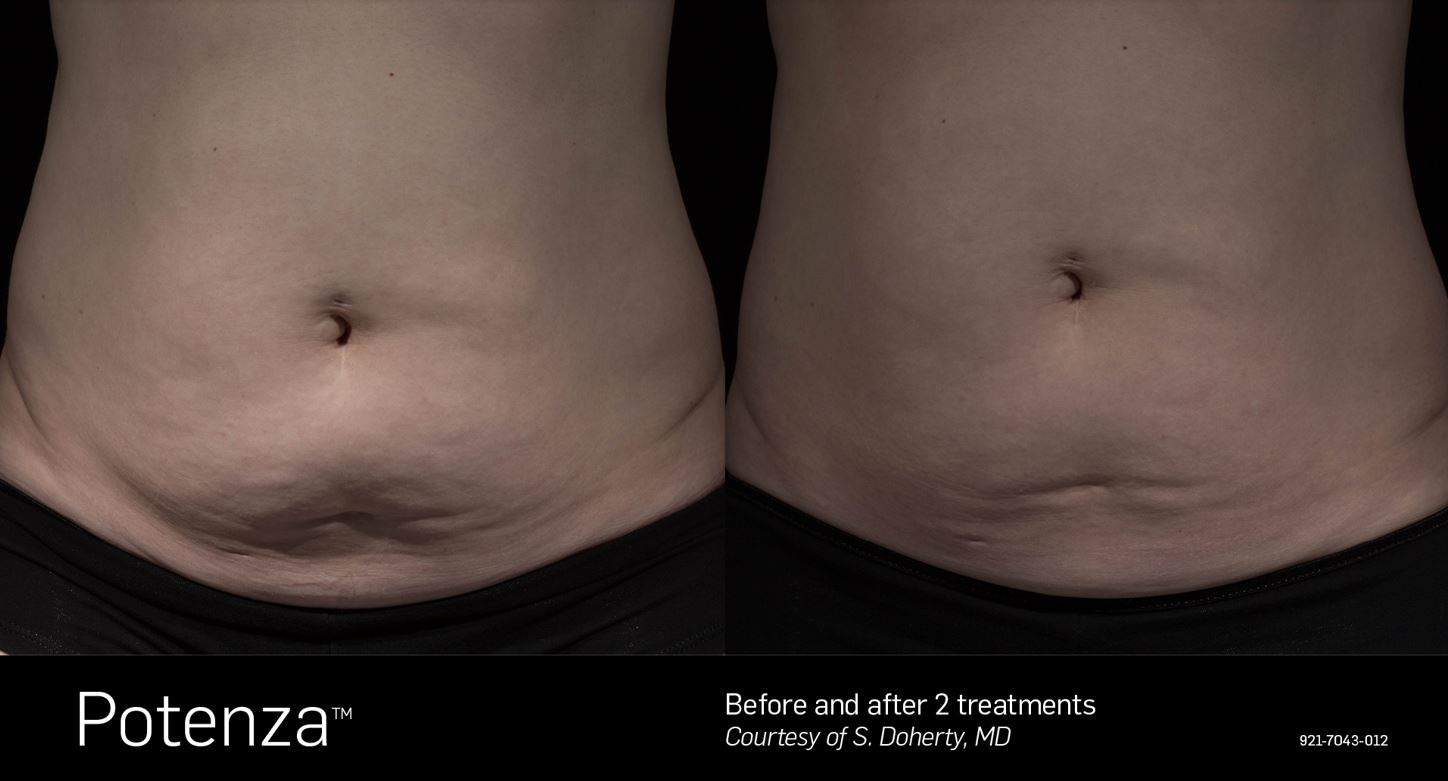HOW TO GET RID OF POST-INFLAMMATORY HYPERPIGMENTATION AND ACNE
Acne, a prevalent skin condition affecting a staggering 5.6 million individuals in Canada alone—equivalent to around 20% of the population—transcends more than just physical inconvenience [1]. The psychological toll it induces, including harming self-esteem and overall quality of life, cannot be understated.
Even after active acne fades, its mark often persists as post-inflammatory hyperpigmentation (PIH). This cutaneous disorder is caused by the skin’s intricate response to inflammation, which results in excess melanin production and the subsequent appearance of darkened patches.
This article explores post-inflammatory hyperpigmentation resulting from acne, covers treatment options, and emphasizes the importance of seeking guidance from a dermatologist. They can help tailor an individualized acne treatment strategy to your unique skin type and concerns.
To learn more on how to improve post-inflammatory hyperpigmentation and acne, continue reading ahead.
How Acne’s Inflammatory Response Can Cause Hyperpigmentation
Acne is a skin condition that occurs when hair follicles become clogged with sebum, dead skin cells, and possibly bacteria. This results in lesions like pimples, blackheads, and whiteheads.
Inflammation in follicles can also lead to more severe lesions, causing painful, pus-filled lumps under the skin. Post-inflammatory hyperpigmentation (PIH) often follows acne, causing dark patches due to the preceding inflammation.
Here’s how acne triggers post-inflammatory hyperpigmentation:
- Inflammation: Acne causes inflammation as the immune system responds to bacterial infection in clogged hair follicles.
- Melanin release: Inflammation prompts the release of chemicals that stimulate melanin production, which is the skin’s protective pigment.
- Uneven distribution: Melanin might cluster in specific areas due to inflammation, forming darker patches known as PIH.
- Cell damage: Inflammation damages skin cells and vessels, disrupting melanin distribution and causing pigmented spots.
- Healing: As acne heals, excessive melanin remains, creating brown or black spots that contrast with the skin.
Factors Influencing PIH Severity
Certain factors can make some individuals more prone to developing PIH than others. These factors include:
Gender
While there isn’t a clear gender-based predisposition to PIH, specific conditions that can lead to PIH, such as acne, may be more prevalent in certain genders due to hormonal variations.
For instance, hormonal fluctuations can affect acne in individuals of any gender; however, they may be more prevalent in males during adolescence and in females during menstruation, pregnancy, and even the menopausal stage.
Skin Tone
Individuals with darker skin tones, such as people of African, Asian, or Hispanic heritage, have an increased susceptibility to developing PIH [2]. This elevated vulnerability stems from their skin’s increased melanin production, which is the pigment responsible for skin colouration.
Genetic Predisposition
Genetic variations can affect the production and distribution of melanin, the pigment that determines skin colour. Individuals with particular genetic profiles may produce more melanin in response to inflammation, leading to a higher likelihood of developing PIH [3].
Sunlight Exposure
Sunlight exposure significantly influences the onset and exacerbation of PIH [4]. UV radiation prompts melanin production, and existing hyperpigmented areas can darken further with sun exposure.
Lesion Trauma
Picking, popping, or squeezing acne lesions can cause trauma to the skin and worsen inflammation. This increases the likelihood of PIH development. It’s essential to avoid touching or manipulating acne lesions to prevent further damage.
Managing Acne to Prevent Post-Inflammatory Hyperpigmentation: Treatment Choices
Preventing PIH entails effectively handling acne to reduce inflammation and irritation. Additionally, proper acne treatments, such as topical retinoids, benzoyl peroxide, and salicylic acid, can effectively manage inflammation and curb the development of severe lesions prone to causing PIH.
Treating PIH might also encompass different dermatological procedures, including the following:
Microneedling for Skin Rejuvenation
Microneedling is a minimally invasive treatment that uses a device featuring small needles to deliberately induce tiny injuries on the outer layer of the skin. This technique triggers the generation of collagen and promotes skin regeneration.
Microneedling effectively treats PIH and acne scars [5]. By promoting collagen and elastin production, microneedling helps improve skin texture, reduce the appearance of scars, and even out skin tone.
Chemical Peels for Stimulating the Formation of New Cells
Chemical peels involve applying a chemical solution to the skin, which causes controlled exfoliation and removal of damaged skin cells. They work by exfoliating the top layers of the skin, removing the pigmented cells affected by PIH. This process promotes the growth of new, healthy skin cells, which gradually replace the hyperpigmented ones [6].
Platelet-Rich Plasma (PRP) Therapy for Regeneration
Platelet-rich plasma therapy involves extracting a small quantity of the patient’s blood, refining it to amplify the concentration of platelets, growth factors, and other beneficial components, and subsequently injecting this enriched PRP back into the skin.
PRP therapy enhances the skin’s natural healing and regenerative processes. It can be combined with microneedling to improve PIH and acne scars [7]. PRP stimulates collagen production and speeds up tissue repair, leading to a smoother and more even complexion.
Hydrafacial Treatment for Deep Cleansing
The hydrafacial treatment is a non-invasive and multi-step facial procedure that combines several skincare techniques to cleanse, exfoliate, extract impurities, hydrate, and protect the skin. The treatment uses a specialized device equipped with vortex-like technology to administer serums, water, and gentle suction to the skin.
Hydrafacial treatment is particularly effective in treating post-inflammatory hyperpigmentation and preventing new acne breakouts. Deeply cleansing and nourishing the skin helps alleviate dark spots and promote a clearer complexion [8].
Laser Therapy for Targeted Results
Laser therapy, such as with a fractional laser or intense pulsed light (IPL) [9], is a versatile option for addressing post-inflammatory hyperpigmentation, acne scars, and skin revitalization.
These treatments deliver controlled energy to the skin, stimulating collagen production and breaking down pigmented areas. They target specific areas of concern with precision. This can result in smoother skin texture, reduced redness, and an even tone.
The Importance of Acne Treatment in Preventing PIH
Acne lesions are prone to rupture or damage when left untreated or when people attempt to squeeze or pick at them. This physical damage intensifies the existing inflammation and can introduce additional melanin-producing cells to the affected area.
Acne treatment helps prevent the formation of new pimples or lesions. Fewer acne breakouts mean fewer opportunities for inflammation and, consequently, fewer instances of PIH.
Moreover, acne treatments are formulated to improve overall skin health. They can hydrate the skin, regulate oil production, and enhance the skin’s natural protective barrier. A healthier skin barrier is better equipped to resist inflammation and the subsequent development of PIH.
You should consult a dermatologist or skincare expert for a personalized treatment plan suited to your skin type and needs.
Elite MedSpa: Toronto’s Trusted Experts in Acne and Post-Inflammatory
Hyperpigmentation Treatment
Are you searching for the most advanced acne and hyperpigmentation treatment in Toronto? If so, look no further! Our team of skilled medical professionals at Elite MedSpa customizes treatment plans to address individual skin concerns, ensuring optimal results and patient satisfaction.
Our comprehensive solutions offer a path to clearer, more radiant skin, including microneedling, platelet-rich plasma therapy, hydrafacial treatment, and laser therapy. Our professionals skillfully combine these advanced treatments to empower you to regain confidence.
Feel free to call us at (905) 339-1717 to discover our acne and hyperpigmentation treatment options in Toronto and embrace the change you deserve. You can also reach us at frontdesk@elitemedspa.ca or contact us here.
Resources
1. Canadian Dermatology Association. “Acne.” (2022, January 13). https://dermatology.ca/public-patients/skin/acne/
2. Andrew, A., et al. “Racial Ethnic Variations in Acne: A Practical Algorithm for Treatment and Maintenance, Including Skincare Recommendations for Skin of Color Patients With Acne.” (2022, November 11). Journal of Drugs in Dermatology. https://pubmed.ncbi.nlm.nih.gov/36342741/
3. Baxter, L., and Pavan, William J. “The Etiology and Molecular Genetics of Human Pigmentation Disorders.” Wiley Interdisciplinary Reviews: Developmental Biology. (2012, May 17). www.ncbi.nlm.nih.gov/pmc/articles/PMC3694277/
4. Piquero-Casals J., et al. “Sun Exposure, a Relevant Exposome Factor in Acne Patients and How Photoprotection Can Improve Outcomes.” (2023, March 22). Journal of Cosmetic Dermatology. https://pubmed.ncbi.nlm.nih.gov/36946555/
5. Iriarte, C., et al. “Review of Applications of Microneedling in Dermatology.” (2017, August 8). Clinical, Cosmetic and Investigational Dermatology. https://www.ncbi.nlm.nih.gov/pmc/articles/PMC5556180/
6. Ravikumar, B., et al. “Efficacy of Alpha and Beta Hydroxy Acid Chemical Peels in Post Acne Pigmentation: A Double Blinded, Randomized, Controlled Trial.” The Journal of Clinical and Aesthetic Dermatology. (January 2022). https://www.ncbi.nlm.nih.gov/pmc/articles/PMC8903232/
7. Mikhael, N.W., et al. “Efficacy of Platelet Rich Plasma in Treatment of Acne Scars.” Benha Journal of Applied Sciences. (2021). https://bjas.journals.ekb.eg/article_169596_ed2a9a3cc59e26a16a93c29b20bd29af.pdf
8. Storgard, R., et al. “Efficacy and Tolerability of Hydrafacial Clarifying Treatment Series in the Treatment of Active Acne Vulgaris.” The Journal of Clinical and Aesthetic Dermatology, U.S. National Library of Medicine. (December 2022). https://pubmed.ncbi.nlm.nih.gov/36569524/
9. Wu, X., et al. “Intense Pulsed Light Therapy Improves Acne-Induced Post-Inflammatory Erythema and Hyperpigmentation: A Retrospective Study in Chinese Patients.” Dermatology and Therapy. (May 2022). https://www.ncbi.nlm.nih.gov/pmc/articles/PMC9110597/




